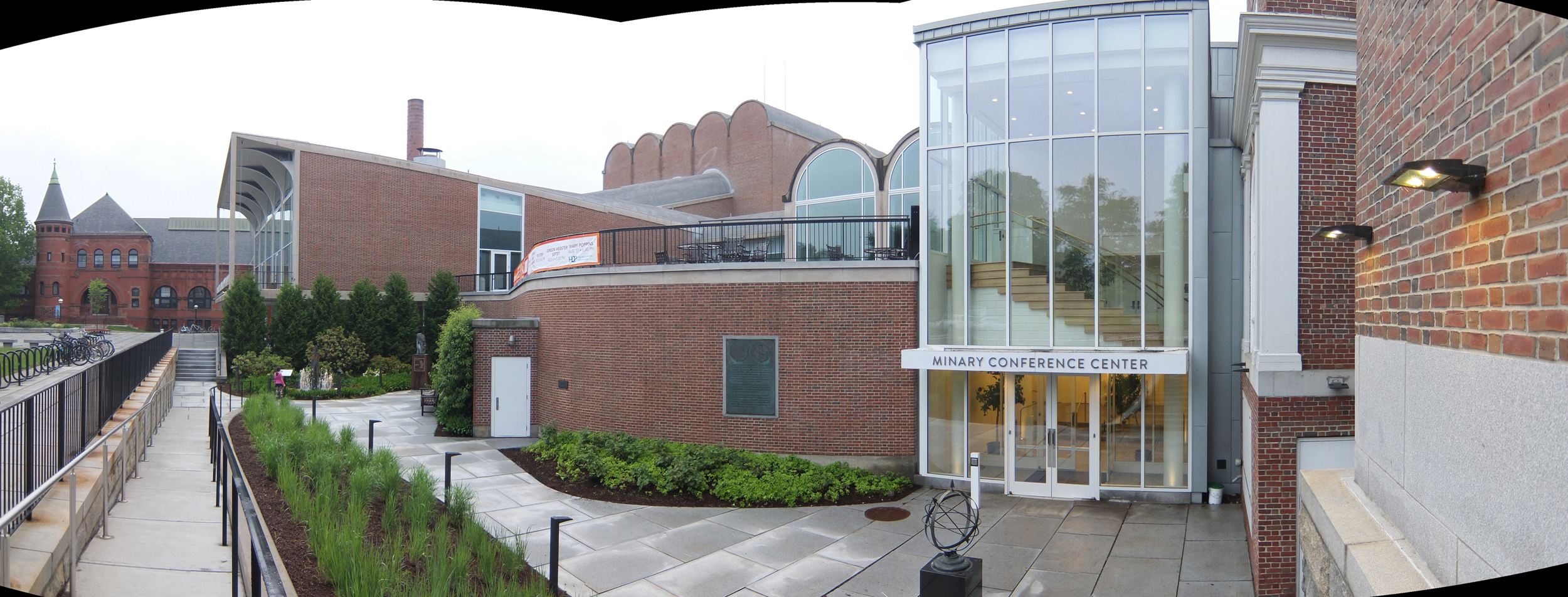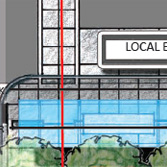The rededication of the memorial plaques that had been returned or relocated to Memorial Field took place last weekend (Alumni Relations press release, Events notice).
The green wall on which the various plaques are mounted faces westward from behind the brick arches of the West Stands. A new circular logo-like relief sculpture by Dimitri Gerakaris ’69 bearing the motto “THE HILL WIND KNOWS THEIR NAME”1The phrase is a reference to a line in the “Alma Mater,” which is a version of the poem “Men of Dartmouth” (“The still North remembers them, / The hill-winds know their name, / And the granite of New Hampshire / Keeps the record of their fame.”). Richard Hovey, “Men of Dartmouth,” in H.J. Hapgood and Craven Laycock, eds., Echoes from Dartmouth (Hanover, N.H., 1895), 12. is an organizing feature; it was donated by the Sphinx Foundation.2The Foundation, of whose board Gerakaris has been a member, maintains the Sphinx Tomb. Its other purposes include being a “reservoir” of college history and preserving the educational ceremonies of the Sphinx (it conducts a “formal annual course on Dartmouth and Sphinx history and tradition” for members). Getting good Internet access through the poured-concrete walls of the tomb must be tough, and indeed one of the group’s accomplishments is the maintenance of “the building’s wireless and high speed conductivity to ensure the Sphinx Building provides the strongest support for undergraduate academic activities.” Those activities include using the library and study stations and engaging in “extensive peer driven learning experiences” (2013 Form 990 PDF). Gerakaris, of Canaan, is the sculptor of the rugby relief on the chimney breast in the Rugby Clubhouse.
The Big Green Alert Blog has a photo of each plaque. The post-1920s plaques were moved here from elsewhere. For pre-1920s plaques, visit Webster Hall, where an Alumni Association plaque lists the 73 Civil War dead and a Class of 1863 plaque lists the 56 class members who served in the Civil War. The two plaques were installed in 1914, about six years after Webster Hall was finished.
Dartmouth does not seem to have a war memorial for any earlier war, and Charles T. Wood’s The Hill Winds Know Their Name (pdf) does not list any. Dartmouth certainly could have a monument to past and future college students and officers who fought in the Revolution; students of Moor’s Charity School are actually more prominent in that war than are Dartmouth students, and at least one (Joseph Brant) took part in both the French & Indian War and the Revolutionary War.
——–
| ↑1 | The phrase is a reference to a line in the “Alma Mater,” which is a version of the poem “Men of Dartmouth” (“The still North remembers them, / The hill-winds know their name, / And the granite of New Hampshire / Keeps the record of their fame.”). Richard Hovey, “Men of Dartmouth,” in H.J. Hapgood and Craven Laycock, eds., Echoes from Dartmouth (Hanover, N.H., 1895), 12. |
|---|---|
| ↑2 | The Foundation, of whose board Gerakaris has been a member, maintains the Sphinx Tomb. Its other purposes include being a “reservoir” of college history and preserving the educational ceremonies of the Sphinx (it conducts a “formal annual course on Dartmouth and Sphinx history and tradition” for members). Getting good Internet access through the poured-concrete walls of the tomb must be tough, and indeed one of the group’s accomplishments is the maintenance of “the building’s wireless and high speed conductivity to ensure the Sphinx Building provides the strongest support for undergraduate academic activities.” Those activities include using the library and study stations and engaging in “extensive peer driven learning experiences” (2013 Form 990 PDF). |

